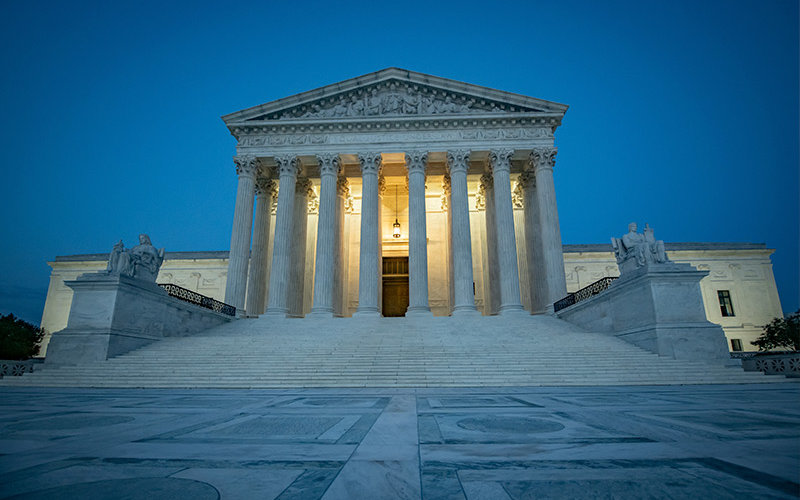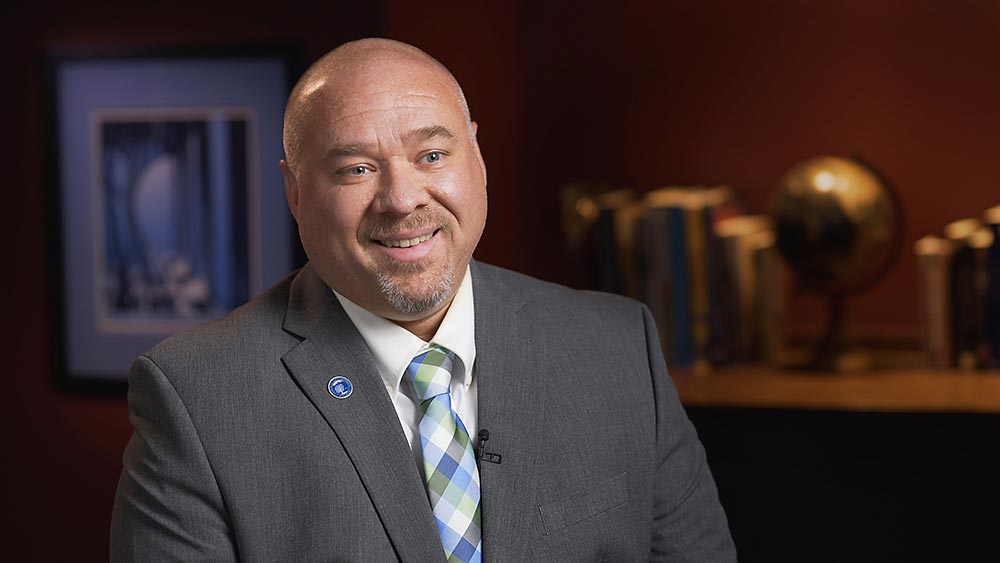

A high school’s suspension of a cheerleader over her profanity-laced social media posts is a violation of her First Amendment rights, the U.S. Supreme Court ruled on June 23 in one of the most significant First Amendment cases involving student speech rights in years.
“I think the Supreme Court struck the right balance here,” said Jason Shepard, chair and professor of communications at Cal State Fullerton who specializes in media law. “In this case, the school overreached in punishing a cheerleader who vented on social media about not making the varsity team.
“But the court left open the door for schools to punish students for off-campus speech in more serious cases that might involve targeted bullying or threats against students or teachers that have serious, negative effects on the school environment, for example,” Shepard explained.
In an 8-1 ruling written by Justice Stephen Breyer, the court ruled in Mahanoy Area School District v. B.L. that the First Amendment protected Brandi Levy from discipline when she posted a photo and caption on Snapchat using the F-word multiple times after not making the varsity cheerleading team. The school suspended her from the team for one year, saying the vulgar post violated school rules and hurt team morale.
But the Supreme Court said the school overreached in violating the student’s free speech rights. “Sometimes it is necessary to protect the superfluous in order to preserve the necessary,” Justice Breyer wrote.
Shepard shared his analysis of the case and his thoughts about its effects for students and schools.
What does the Supreme Court decision mean?
The Supreme Court endorsed the principle that the First Amendment generally protects students in their off-campus speech, including that on social media, and that schools have a ‘diminished interest’ in regulating off-campus speech as compared to on-campus speech.
But the court’s decision left open the door for schools to discipline students for off-campus speech in serious cases, including bullying, harassment, threats, cheating and hacking.
Schools are going to have to figure out where the balance lies, and I expect a lot of lawsuits over difficult cases in the coming years.
Why do students have fewer First Amendment rights than adults in the first place?
Schools have a right and responsibility to maintain order and discipline, and the Supreme Court has ruled many times that students who violate school rules are subject to discipline. The courts emphasize that when schools act in loco parentis — in the place of the parent – they have wide latitude to punish student speech within schools that disrupts the school environment or undermines educational values.
In the area of student speech and press rights, the Supreme Court has narrowed First Amendment protections over time, siding with school authorities who said they need wide latitude to run their schools. The high point was in 1969, when the Supreme Court ruled in favor of students who wore black armbands to school to protest the Vietnam War, in Tinker v. Des Moines School District.
But since then, students have lost case after case. In a terrible decision for press freedom rights, in 1988 the court upheld the censorship of a high school newspaper in Hazelwood v. Kuhlmeier. And in 2007, in Morse v. Frederick, the court upheld the suspension of a student who unfurled a banner on a public street during a parade saying “Bong Hits 4 Jesus.”
Today’s ruling addressed the first student speech case before the court since 2007, and it involved entirely off-campus speech. The technological changes of the social media era have created entirely new legal questions that the court had not yet addressed.
Was the outcome what you expected?
Generally, yes. Many observers expected the court to side with the cheerleader, but it was unclear just how far it would go in setting broader principles for future cases.
Many people wanted the court to issue a bright-line rule saying that all off-campus speech was off limits to discipline by schools. That was essentially the ruling of the 3rd Circuit Court. The Supreme Court agreed with the outcome of the appellate court, but it did not adopt the broader rule.
In many ways, this opinion was similar to other recent controversial decisions by the court under Chief Justice John Roberts, in trying to find narrow ways to resolve cases without issuing broader precedents.
When does students’ expression on social media make them vulnerable for discipline?
The good news for schools is that the decision says that the “school’s regulatory interests remain significant in some off-campus circumstances.” Undoubtedly, the decision will be parsed by lower courts in the coming years about where the line is between protected and unprotected speech in those kinds of cases.
But in general, the decision paves the way for students to have breathing space in their social media expression when it comes to commenting on public, political and social issues.
How does this decision change the First Amendment?
Notably, Justice Breyer’s opinion emphasized that public schools are “the nurseries of democracy” and schools have a duty to embrace the “marketplace of ideas.” The court also said schools must protect the expression of unpopular ideas and that they have a duty to make sure future generations support the aphorism, “I disapprove of what you say, but I will defend to the death your right to say it.”
That’s music to this media law professor’s ears.